How to grow Allium
When the spring bulbs have finished flowering and the summer blooms are just gearing up for the season ahead, Alliums are the fireworks of the early summer garden adding bold punches of colour with their orb-like forms.
We often think of Alliums as the bright purple, spherical heads towering above other plants in the border in May and June. They are undoubtedly stunning, but did you know that Alliums are available in a huge range of colours and forms? From the dramatic, explosive blooms of Allium Schubertii to the unusual blue globes of Allium Caeruleum, our fabulous range of these wonderful plants at Hayloft has the perfect Allium for any garden space and design.
Whether you have come here for some growing tips and tricks, or need a little extra help getting started, we will show you how to get the best from these invaluable bulbs!
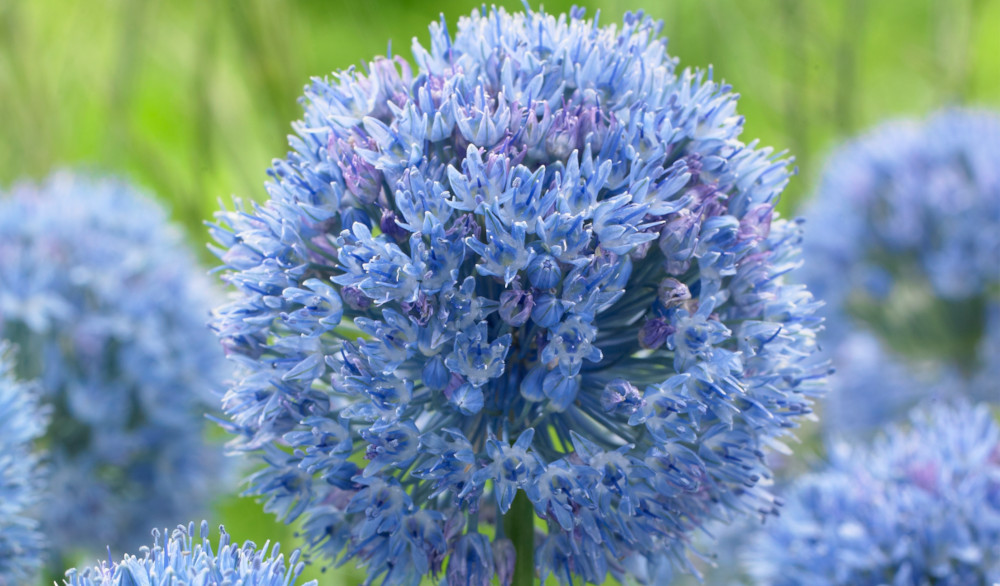
Key Information
Soil pH
Position
Hardiness

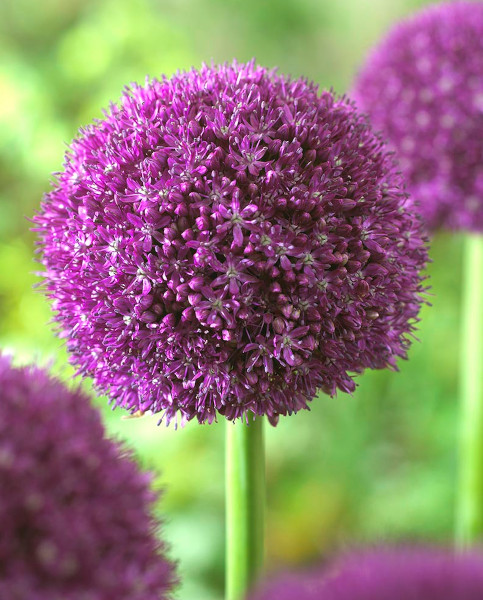
Where & when to plant Allium
Early to mid-autumn is the best time to plant Alliums, we recommend October if your gardening calendar allows.
Find a spot for your Alliums where they will receive plenty of sunshine and is not exposed to harsh winds which could flatten taller varieties.
Alliums look fabulous when planted in large groups to punctuate a planting scheme. The purple shades contrast well with orange and yellow flowers and look equally good in a tonal scheme of blues and silvery greens. Shorter varieties work well at the front of a border.
Alliums will grow happily in any soil type but need plenty of drainage as they can rot in waterlogged ground. Therefore, if you are growing on heavy clay, you should add a generous handful of grit to the bottom of the planting hole.
A bulb planter is a brilliant tool for creating planting holes and a great investment which will save a lot of effort digging and will allow you to plant many bulbs quickly.
How to plant Allium
Plant your bulbs at a depth which is 4 times their size. There is no need to add any manure or rich matter to the soil as the energy will be already stored in the bulb. Larger bulbs should be spaced at least 20cm apart, whilst smaller varieties can be planted more closely together (10cm apart).
Place your bulb in its planting hole with the pointy end facing upwards and cover the hole over with soil. There is no need to water the bulb in unless the ground is particularly dry.
Alliums can also be grown in pots which must be deep enough to accommodate the planting depth of the bulbs and their root system. They can be planted as part of a bulb lasagne, usually forming the very bottom layer which will bloom last, following on from tulips.
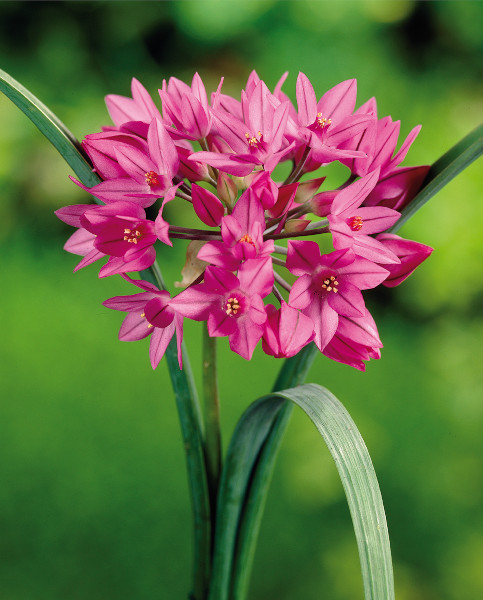
What to plant with Alliums
Alliums are fabulous, easy-to-grow focal plants for the early summer garden. They work well in many garden designs and colour combinations, from cottage gardens, to modern or prairie planting schemes.
Traditional purple alliums look fantastic growing up through the zingy lime green foliage of Alchemilla mollis and Euphorbia, or emerging from a bed of purple Geranium Rozanne.
Contact our wonderful and knowledgeable Customer Care team at Hayloft if you would like any help or planting ideas for your Alliums. We have a little inspiration below to help get you started.
Cottage/traditional garden
Roses, Alchemilla mollis, Bearded Iris, Foxgloves, Hosta’s, Delphiniums, Astrantia, Geums, Euphorbia, Lupins, Ferns, Hardy Geraniums, Poppies, Peonies, Aquilegia, Verbascum
Prairie/dry planting scheme
Grasses, Lavender, Bronze Fennel, Stachys byzantina, Achillea, Gaura, Verbena bonariensis
However you choose to incorporate these architectural beauties into your garden we are sure that you will look forward to the return of their nodding, spherical heads each year as a reminder that the garden is about to burst into colour and Summer is nearly here.
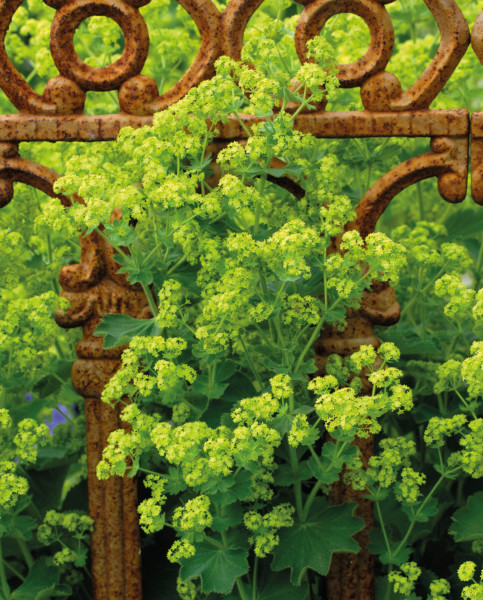
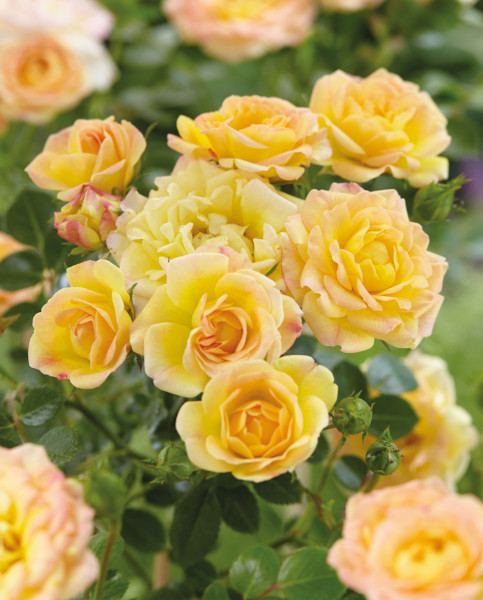
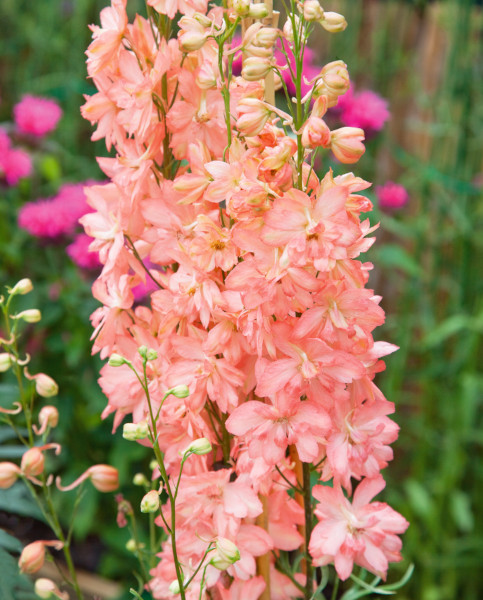
How to care for Alliums
Alliums produce foliage in spring well before their flowers appear which turns brown and dry and can look unsightly by the time the flowers bloom. The leaves can be removed if they are easily pulled away. Many gardeners choose to plant Alliums amongst other plants whose foliage will hide the leaves in early summer. This works well with herbaceous Geraniums, Hostas, Geums, and grasses.
Alliums do not require regular watering unless you are growing them in a pot. The pot should have plenty of drainage to avoid the bulbs sitting in wet soil.
When your Alliums have finished blooming, the flower heads can be left to fade and dry in the garden. They add an architectural beauty to autumn and winter gardens and can be cut afterwards for seasonal arrangements.
Alliums do not usually require feeding unless your soil is particularly poor. If this is the case, add a balanced liquid feed to your plants as foliage starts to appear in spring.
How to propagate Alliums
Over time, Alliums will naturally multiply and spread in the garden. They do this by producing offsets, or bulblets from the main bulb.
Once your Alliums have finished flowering, you can dig them up and carefully detach the tiny bulbs surrounding the mother bulb and replant them individually in the garden or in pots of compost with added grit to grow on and form larger plants.
Alliums can also be grown from seed which should be collected once they have matured and dried on the plant in autumn. Sow the seeds in trays or pots of gritty compost, keep them moist and allow them to sprout and grow on before potting on and planting out. This is a much slower process of propagating plants and will take several years to grow Alliums large enough to flower. The new plants may also not be true to the original.
Allium sphaerocephalon, known as drumstick alliums, differ to most Alliums because they flower later in summer and produce aerial bulbils on the flower heads. These tiny bulbs can be carefully removed and grown on following the instructions above for offsets or seeds. Again, they will take a few years to produce flowering plants.
Alliums tend to be trouble-free plants, but as part of the onion family they can sometimes be prone to a fungal disease called Allium white rot and to the onion fly. Avoid planting in a spot where onions or garlic have previously been grown to help overcome these potential problems.




